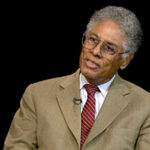A review of The Empty Cradle. By Phillip Longman.
Basic Books, 2004.
All over the world birthrates are falling. This may be most evident in the Western world, but falling fertility rates are found throughout the developing world as well. The implications of this trend are a matter of considerable concern.
This volume examines the implication of the global fertility decline, and offers some solutions to turn things around. Although this book deals mainly with the American situation, it has relevance for most Western nations.
The author begins by laying out the data. Today global fertility rates are half what they were in 1972. Consider the Middle East for example. Fertility rates are falling faster there than anywhere else in the world. Iran’s rate has dropped below replacement levels (that is, 2.1 children per woman). Turkey’s rate is just above this figure.
Even in Asia the rates are heading downwards. Since the first half of the 90s. for example, India’s rate has fallen by one fifth. China too continues to lose numbers, and by mid-century it could be losing 20 to 30 per cent of its population per generation. And Europe of course leads the way, with precariously low levels. Italy for example has just 1.2 children per woman. Spain is doing even worse, with 1.15 children. These two nations are experiencing the lowest fertility rates ever seen in recorded history.
All together, 59 nations making up 44 per cent of the world’s population, are not producing enough children to avoid population decline.
What are the implications of such a demographic time bomb? Simply stated, we are rapidly becoming an aging society, with ever shrinking pools of young people. This has very real repercussions on many fronts. But a major worry of governments is how we are going to pay for this growing pool of the elderly, with these declining fertility rates. Pensions and various welfare payments have usually been paid for by the younger generation of workers. But as the work force shrinks, so does taxable income, and so does social welfare spending.
As but one example, in Europe today there are 35 people of pensionable age for every 100 people of working age. If present trends continue, by 2050 there will be 75 pensioners for every 100 workers.
Moreover, capitalism and productivity are also tied in with population growth. When populations decline, so does economic productivity. Japan is a good case in point, with its economic bubble well and truly burst. A major reason for its economic downturn is its aging population, which is now amongst the oldest on earth. While other factors play a part, changing demographics in large part explains the slow economic growth of the nation.
Other major problems can be cited. Suffice it to say that this population implosion is every bit as alarming as the supposed population explosion was seen to be 40 years ago.
Longman asks why this demographic trend is unfolding before our eyes. Many reasons come to mind. One major factor is this: it simply costs a huge amount of money to raise a child today. In the US it costs a family $211,000 to raise a child for his or her first 18 years of life. In Australia, the figures are the same, with a quarter of a million Australian dollars needed to do the equivalent.
The increasing number of working women, and women in higher education, is another factor. So too are such reasons as declining male wages, fear of divorce, rising taxes, the absence of grandparents as child carers, contraception use and abortion.
The economic component is certainly a leading cause of childlessness. In a chapter entitled ‘Home Economics” Longman makes the case that human capital is the real source of economic growth, but various economic forces are conspiring to reduce human capital.
Human capital in general, and people in particular, are dwindling because the economy demands more of its workers to be well-educated, while it does not provide the time or the money for that education. In the past the best nurturing and education of future workers came from parents themselves. They were best placed to raise well-developed children who in turn would become productive members of the workplace.
But governments today are simply not compensating parents for this vital role. It simply is not economically worthwhile for parents to pour themselves into their children, when governments do not acknowledge and reward this valuable service.
That is, parents provide quality future members of the workforce, and they curtail an aging population. The returns to society are huge, but the returns to parents continue to shrink. And taxation is a major means by which parents are penalised today.
In the past governments paid men a family wage to adequately account for dependent wives and children, Today we have nearly the opposite situation, with families amongst the most heavily taxed groupings in society. Parents currently face huge tax burdens which most other individuals do not. Thus it just does not pay to have children.
But societies suffer, as I said, when the best nurturers and educators of children – and the cheapest – are economically discouraged from performing their invaluable duties. Thus while everyone benefits from the raising of the next generation, only parents face the reals costs – both financial and otherwise. The real redistribution of income in America today, argues Longman, is from “dutiful parents and others directly involved in forming the human capital that sustains the system, to those who do not”. In effect, he continues, “we have placed a very high tax on responsible parents and other nurturers of human capital, and used the proceeds to support the consumption of the population as a whole”.
All of this results in the present problems we now face. Longman summarises: “An economy that creates disincentives to have children, while undercompensating parents and other caregivers for the essential human capital they create, is living beyond its means”.
So how do we turn things around? Drawing on the work of family expert Allan Carlson, among others, Longman proposes several possible options. Removing economic disincentives is obviously key. Thus substantial tax relief for parents is a first vital step.
He also proposes the encouragement of home-based employment and family business. This would not be a replacement of, but a complement to, global capitalism. As the world moves from a manufacturing economy to a service economy, such a change may become more and more feasible.
Other options are canvassed. While they may not serve as a panacea, the truth is that currents trends are unsustainable. The increasing growth of the number of elderly people, coupled by a decline in our birthrates, is a recipe for disaster. Any volume that alerts us to the dangers and offers some alternatives, as this book does, provides a useful service indeed.
[1122 words]




















Ever since I first read about “The Empty Cradle”, I was curious about it because I feared serious problems from a rapidly aging population.
Moreover, for all the criticism he gets from bothnever is what his critics on either the left or right would believe, and he takes the major issue of both sides (family decline and environmental destruction for instance) with absolute seriousness.
Julien Peter Benney, Carlton North, Victoria